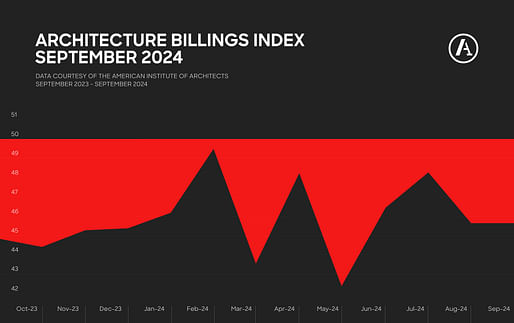
As Archinect reported earlier this week, the latest AIA/Deltek Architecture Billings Index shows that U.S. architectural business conditions remain turbulent. Billings have declined at firms for over one and a half years, according to the index, while our monthly Archinect State of AEC series has noted that the challenging conditions are spread across all U.S. geographical regions.
To find out how architects, particularly firm owners, can navigate the current downturn, we recently spoke with former HOK CEO and Chairman Patrick MacLeamy on the subject. Through his long career at HOK, and his book Designing a World-Class Architecture Firm: The People, Stories, and Strategies Behind HOK, MacLeamy has accumulated a wealth of knowledge on how firms can survive poor economic conditions.
As our feature article shows, a majority of MacLeamy’s advice for firms take place long before a downturn hits, underscoring the need for architects to adhere to healthy practice management principles so that, when a downturn occurs, firms are not scrambling to innovate under financial pressure.
Nonetheless, MacLeamy offered readers three key short-term tactical moves that practice owners can make during economic downturns to strengthen their firm’s resiliency: manage your clients, people, and money.

For MacLeamy, managing your clients can mean suggesting to a client that work continues on the project until the next milestone is hit, whether that be in the coming weeks or months. Beyond this, however, MacLeamy stresses the importance of maintaining communication with the client even after work has come to a halt.
“By staying in touch with the client, I don’t mean the occasional phone call,” MacLeamy told us. “Once a week, make an excuse to reach out to the client, whether an email invitation to have a coffee or to go to a local restaurant.” In addition to reinforcing your relationships for when economic activity picks up again, such conversations may lead you to offer services beyond the core architect function.

Communicate every day,” MacLeamy told us, discussing the importance of keeping staff informed on the business’ prospects during a downturn. “Get everybody in the office together and have a simple talk. Tell them where the firm is, what the status of projects are, and what your plan is to navigate the downturn.”
For MacLeamy, making redundancies should be a last resort. If the firm’s financial situation calls for a reduction in staff costs, MacLeamy recommends keeping the employee headcount stable, and temporarily reducing salaries. In this situation, MacLeamy recommends starting with your own salary before reducing those of your staff, and promising that the cuts will be accounted for and corrected when the firm’s finances are healthier.

“We are tied to our clients, and we let our clients delay before paying us,” MacLeamy told us, when explaining how architects in general must improve their attitude to cash flow. “As architects, we often end up financing our client’s business because they are living off the money that they have effectively borrowed from us by not paying on time.”
In larger firms such as HOK, MacLeamy suggests a 30-day window for billing projects after the architect’s work has been delivered. For smaller firms, with fewer clients to bill, MacLeamy suggests this be shortened to a week.
In addition to managing cash ‘in,’ MacLeamy stresses the importance of managing cash ‘out.’ As our second tip highlights, reducing spending on employees should be a last resort. Instead, MacLeamy suggests seeking to temporarily defer payments on vendors or, if the firm is on good terms with its landlord, asking to defer lease payments.
“It’s not good practice,” MacLeamy warns. “But it is far better to have cash available to sustain the firm for 30, 60, or 90 days.”
You can read MacLeamy’s full list of advice in our recently published feature article here.
No Comments
Block this user
Are you sure you want to block this user and hide all related comments throughout the site?
Archinect
This is your first comment on Archinect. Your comment will be visible once approved.